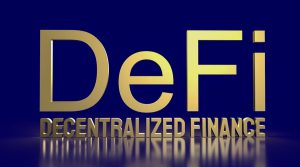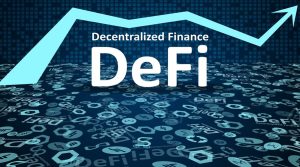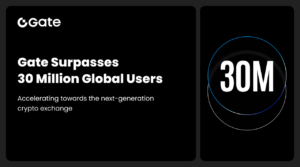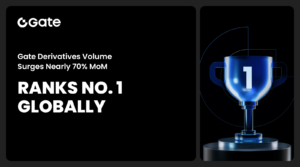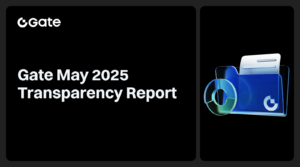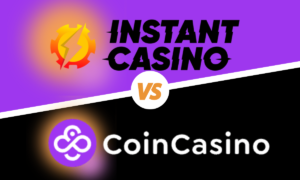Key Benefits of DeFi Cross-Chain Bridges: Exploring the Advantages for Users and Projects
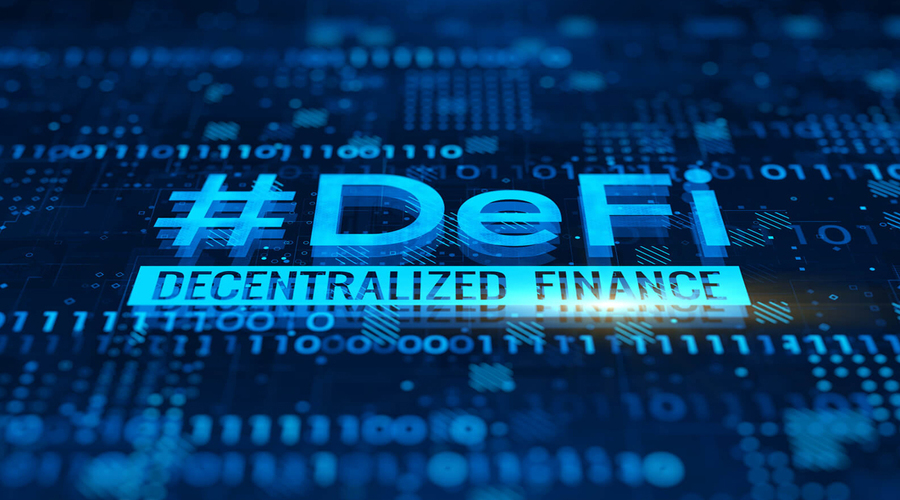
Key Benefits of DeFi Cross-Chain Bridges: Exploring the Advantages for Users and Projects
Introduction to DeFi Cross-Chain Bridges
DeFi cross-chain bridges have emerged as transformative solutions, facilitating interoperability and communication between different blockchain networks. These bridges offer a wide range of benefits for both users and projects within the decentralized finance ecosystem. Let’s delve into the key advantages of utilizing DeFi cross-chain bridges.
Enhanced Asset Accessibility
One of the primary benefits of DeFi cross-chain bridges is enhanced asset accessibility. These bridges enable users to access a more extensive range of assets from various blockchain networks, breaking down the barriers imposed by individual chains. Users can leverage assets from different chains, expanding their investment opportunities and diversifying their portfolios.
- Increased access to a broader range of tokens, cryptocurrencies, and digital assets
- Utilization of unique features, functionalities, and liquidity pools available on different chains
- Optimization of investment strategies and potential returns
Expanded Market Opportunities
DeFi cross-chain bridges also open up expanded market opportunities for users and projects. By connecting different blockchain networks, these bridges provide access to previously untapped markets and user bases. Projects can expand their reach beyond a single chain, tapping into the vibrant ecosystems of multiple networks.
- Access to new markets and user bases
- Exposure to a wider range of financial instruments and investment opportunities
- Increased participation in various DeFi projects and yield farming opportunities
Improved Liquidity and Trading Options
Liquidity is a vital aspect of any financial ecosystem, and DeFi cross-chain bridges contribute to enhanced liquidity in the decentralized finance space. By connecting different chains, these bridges pool liquidity from various sources, creating larger and more robust liquidity pools for users and projects.
- Improved trading options and reduced slippage for users
- Deeper and more liquid markets for project tokens or assets
- Enhanced efficiency and vibrancy of DeFi markets
Diversification and Risk Mitigation
Diversification and risk mitigation are crucial considerations in any investment strategy. DeFi cross-chain bridges offer users the opportunity to diversify their assets across different blockchain networks, reducing their exposure to the risks associated with a single chain.
- Spreading risk and mitigating potential losses
- Protection against security vulnerabilities, network congestion, or other issues specific to a particular blockchain
- Strategic asset allocation and optimized risk-reward ratios
Collaboration and Interoperability
DeFi cross-chain bridges foster collaboration and interoperability between different blockchain networks and projects. These bridges enable seamless communication and asset transfer, facilitating the sharing of resources, knowledge, and innovation across diverse ecosystems.
- Collaboration between projects, leveraging each other’s strengths and resources
- Integration of assets, data, and functionalities from other chains
- Accelerated growth and adoption within the DeFi ecosystem
Seamless Cross-Chain Asset Management
DeFi cross-chain bridges facilitate seamless cross-chain asset management, providing users with efficient and user-friendly methods to manage their assets across different blockchain networks. These bridges enable users to track, monitor, and control their assets without the need for complex and time-consuming processes.
Users can utilize cross-chain bridges to manage their assets in a unified manner, regardless of the underlying blockchain. This includes viewing asset balances, monitoring transaction history, and executing asset transfers across multiple chains from a single interface. Seamless cross-chain asset management simplifies the user experience and eliminates the need to navigate through multiple wallets or interfaces.
Decentralized Governance and Voting

DeFi cross-chain bridges contribute to decentralized governance and voting mechanisms within the decentralized finance ecosystem. By connecting different blockchain networks, these bridges enable the participation of users and projects in governance processes across multiple chains.
Users can actively engage in decentralized governance by voting on proposals, participating in community discussions, and shaping the future direction of DeFi projects and protocols. The interoperability provided by cross-chain bridges allows for the consolidation of voting power and decision-making across multiple chains, ensuring a more inclusive and democratic governance framework.
Scalability and Enhanced Performance
Scalability and performance are critical factors in the success of any blockchain network. DeFi cross-chain bridges play a role in addressing scalability challenges by enabling the transfer of assets and transactions between chains with varying scaling solutions.
By utilizing cross-chain bridges, users and projects can take advantage of the scaling capabilities of different chains. This includes leveraging layer-2 solutions, sidechains, or other scaling mechanisms to achieve faster and more efficient transaction processing. The ability to tap into scalable solutions across multiple chains enhances the overall performance and user experience within the DeFi ecosystem.
Regulatory Compliance and Interoperability
Regulatory compliance is an important consideration as the DeFi space continues to evolve. DeFi cross-chain bridges offer solutions that facilitate regulatory compliance while maintaining the core principles of decentralization and privacy.
These bridges provide mechanisms to enforce regulatory requirements, such as KYC and AML procedures, when transferring assets between chains. Compliance-friendly solutions enabled by cross-chain bridges enable the integration of regulated assets and traditional finance into the DeFi ecosystem, fostering collaboration between traditional financial institutions and DeFi projects.
Privacy and Confidentiality
DeFi cross-chain bridges also address privacy concerns within the decentralized finance ecosystem. By utilizing privacy-preserving technologies, such as zero-knowledge proofs or secure multiparty computation, these bridges enable the transfer of assets while maintaining confidentiality and privacy.
Privacy-enhancing cross-chain bridges ensure that sensitive information, such as transaction details or asset holdings, remains secure and private throughout the transfer process. This promotes user trust and confidence in the DeFi ecosystem, attracting more participants who value privacy in their financial transactions.
Cross-Chain Interoperability and Smart Contract Execution
DeFi cross-chain bridges enable cross-chain interoperability, allowing smart contracts to execute seamlessly across different blockchain networks. This functionality expands the capabilities of decentralized applications (dApps) and unlocks new possibilities for innovation within the DeFi ecosystem.
By leveraging cross-chain bridges, developers can design and deploy smart contracts that interact with assets and data from multiple chains. This interoperability allows for the creation of complex and interconnected dApps that leverage the strengths of different blockchain networks. It enables the execution of cross-chain transactions, decentralized exchanges, lending platforms, and other sophisticated financial instruments that operate seamlessly across chains.
Decentralized Oracle Integration
Decentralized oracles play a crucial role in providing off-chain data to on-chain smart contracts. DeFi cross-chain bridges facilitate the integration of decentralized oracles, enabling the use of real-world data in cross-chain applications.
By utilizing cross-chain bridges, smart contracts on one blockchain can access and utilize data from decentralized oracles residing on different chains. This integration ensures the accuracy and reliability of off-chain data, making it possible to create DeFi applications that rely on real-time market prices, weather data, or other external information.
Cross-Chain Tokenization and Asset Transfer
DeFi cross-chain bridges enable the tokenization and transfer of assets between different blockchain networks. This functionality expands the liquidity and tradability of assets, allowing users to unlock the value of their assets across multiple chains.
Through cross-chain bridges, assets can be tokenized on one chain and seamlessly transferred to another, preserving their value and properties. This tokenization process enables users to unlock liquidity, facilitate cross-chain trading, and participate in various DeFi protocols regardless of the underlying blockchain network.
Cross-Chain DeFi Infrastructure and Interconnected Ecosystems
DeFi cross-chain bridges contribute to the development of cross-chain DeFi infrastructure, creating interconnected ecosystems that span multiple blockchain networks. This interconnectedness allows for the seamless flow of assets, data, and services between different chains.
By leveraging cross-chain bridges, developers can build infrastructure layers that facilitate the interoperability of various DeFi protocols. This infrastructure enables the creation of cross-chain decentralized exchanges, lending platforms, liquidity aggregators, and other services that provide a seamless and comprehensive DeFi experience across chains.
Cross-Chain Auditing and Security
Security is a paramount concern within the DeFi space. DeFi cross-chain bridges offer solutions for cross-chain auditing and security, ensuring the integrity and trustworthiness of asset transfers and interactions between different blockchain networks.
Cross-chain auditing mechanisms allow for the verification and validation of transactions and asset transfers across multiple chains. This ensures that assets are transferred securely and that the process complies with the predefined rules and requirements. By providing a transparent and auditable framework, cross-chain bridges enhance the security and reliability of cross-chain operations within the DeFi ecosystem.
Cross-Chain Governance and Community Participation
DeFi cross-chain bridges enable cross-chain governance and community participation, empowering users to actively engage in decision-making processes across different blockchain networks. These bridges facilitate the seamless transfer of voting rights and governance tokens, allowing users to participate in the governance of various DeFi protocols and projects.
Through cross-chain bridges, users can exercise their voting rights, propose changes, and contribute to the governance discussions and decision-making processes on multiple chains. This cross-chain governance model promotes decentralization and inclusivity, ensuring that the collective voice of the community is heard and considered in shaping the future of decentralized finance.
Cross-Chain Staking and Yield Farming
DeFi cross-chain bridges facilitate cross-chain staking and yield farming, enabling users to leverage the benefits of staking and yield farming opportunities across different blockchain networks. Users can stake their assets on one chain and earn rewards or yield on another chain, optimizing their returns and diversifying their staking strategies.
By utilizing cross-chain bridges, users can access a wider range of staking options and yield farming pools, increasing their potential earnings and maximizing the utility of their assets. This cross-chain approach enhances the flexibility and profitability of staking and yield farming strategies within the DeFi ecosystem.
Conclusion
DeFi cross-chain bridges offer a plethora of benefits beyond asset accessibility and liquidity. These bridges enable seamless cross-chain asset management, facilitate decentralized governance and voting, address scalability challenges, ensure regulatory compliance, and uphold privacy and confidentiality. As the DeFi ecosystem continues to evolve, the adoption of cross-chain bridges will unlock new possibilities and pave the way for a more efficient, inclusive, and secure decentralized finance landscape.

